Prices in Different Metro Cities
Key Highlights
-
Displacement998 cc
-
Mileage10 kmpl
-
Top Speed400 Kmph
-
Kerb Weight216 kg
-
Fuel Tank Capacity17 litres
-
Seat Height830 mm
Latest on Kawasaki Ninja H2
- Kawasaki unveiled new versions of their litre-class motorcycles with the winged S 1000 RR and the supercharged H2.
- The Kawasaki Ninja H2 now includes smartphone connectivity and the new Rideology app. It is expected that India will receive it next year.
- The Kawasaki Ninja H2 is expected to be released in India in March 2023, with a price range of ₹35,00,000 to ₹36,00,000.
- The engine in the H2 is a 998 cc inline-4 with a two-speed centrifugal supercharger.
Introduction of Kawasaki Ninja H2
The Kawasaki Ninja H2 is a “supercharged supersport”-class motorcycle in Kawasaki’s Ninja sports bike series, with a variable-speed centrifugal supercharger. At Rs 41.79 lakhs, the Kawasaki Ninja H2 is clearly on the higher end of the price spectrum (for the top model of the bike). It is a hampered version of the older H2R unveiled in India. The new version is designed to provide a one-of-a-kind riding experience.
The Ninja H2 is Kawasaki’s flagship supersport model in the Japanese manufacturer’s lineup. With its aggressively honing appearance and outstanding mirror finish on the body, this bike lives up to the brand’s bold tagline, “build beyond belief.” This motorcycle epitomises Japanese craftsmanship, beautifully crafted at the front with finned cavities.
What's New in the Latest Model of Kawasaki Ninja H2
- The new Ninja H2 has mirrors instead of the track-only H2R’s winglets and plastic body panels instead of carbon-fibre panels. The street-legal H2 is said to produce 200 horsepower (150 kW), albeit with less supercharger boost than the H2R.
- Except for the head gasket, cam profile and timing with ECU mapping, exhaust system, and clutch (the H2R’s clutch has two additional plates), the H2 and H2R share the Supercharger (with a lower boost level on the H2) and many other components.
- The bike has 43mm fully adjustable inverted forks in the front and an Ohlins TTX36 UniTrak with full adjustability in the back.
- The new Ninja H2 is, without a doubt, the most powerful production of a street-legal superbike. It has been revamped recently, with its power figure being the most significant change.
- It has received a power boost of nearly 31 horsepower and a ‘self-healing’ paint job.
Highlights of Kawasaki Ninja H2
Design of Kawasaki Ninja H2
The muscular design of the motorcycle complements the massive power output. The LEDs in the central cluster of the headlight are shaped like fangs, adding to the beast-like appearance of the bike.
The bike’s design appears to be inspired by an otherworldly concept. The hipsupporting pads at the rear of the seat work to support the rider at times of intense acceleration, and the adjustable 15mm hip support can be adjusted per the rider’s need.
When viewed from the sides, the Kawasaki Ninja H2R looks like an aggressive forward-canted stance resembling most modern Supersports bikes.
The sleek finish gives the bike a high-end appearance. The trellis frame is painted green to match the single-sided swing arm and raked tail section.
The bike’s exhaust headers add a flowing touch and a hint of grace to the overall appearance. The highly durable paint of the bike makes the scratches repair themselves.
Colour and Variants of Kawasaki Ninja H2
Kawasaki Ninja H2 is available in 1 colour:
- Mirror Coated Matte Spark Black
Kawasaki Ninja H2 is available in 3 different variants:
- Kawasaki Ninja H2 R
- Kawasaki Ninja H2 STD
- Kawasaki Ninja H2 Carbon
Engine of Kawaski Ninja H2
Kawasaki Ninja H2 and Ninja H2 Carbon both have a 988cc liquid-cooled 4-stroke DOHC valve in-line four-cylinder engine that produces 228 HP at 11500 rpm and 104.9 lb-ft of torque at 11000 rpm.
A series of gears and shafts connect the flywheel to a planetary drive and spin a dog-shifted two-speed shaft attached to the impeller.
Features Of Kawasaki Ninja H2
Kawasaki Ninja H2 has a digital speedometer, trip metre, and tachometer, as well as a gear indicator and a fuel warning indicator.
The fuel gauge, low oil, and low battery indicators are also fully operational. A centrifugal supercharger produces less heat than other designs, particularly scroll-type or screw-type superchargers.
Aside from that, features such as a pillion seat, kill switch engine, clock, pass light, and dog-ring transmission make the Kawasaki Ninja H2 more easily accessible.
KLCM electronically controls engine output that prevents wheel spin and minimises wheelies when launching, assisting the rider by optimising acceleration from a stop.
The key to this incredible performance is the engine’s Supercharger, which was designed in-house using technology from the Gas Turbine & Machinery Company, Aerospace Company, and Corporate Technology Division.
Transmission And Brake Of Kawasaki Ninja H2
Kawasaki has a manual transmission with 6-speed and return. Kawasaki Ninja H2 has dual semi-floating 330 mm Brembo disc brakes at the front and single 250 mm disc brakes at the rear.
Pros and Cons of Kawasaki Ninja H2
Pros
- Unrivalled acceleration and speed
- Hyperbike with electronic aids
- The most powerful motorcycle in production
- You’ll have a fantastic-looking bike.
- You can have fun on the racetrack.
Cons
- Generally impractical
- Riding position at the extremes
- Poor fuel economy
Specifications & Features
Power & Performance
-
Fuel TypePetrol
-
Max Power305.75 bhp @ 14,000 rpm
-
Max Torque165 Nm @ 12,500 rpm
-
Emission StandardBS-VI
-
Displacement998 cc
-
Cylinders4
-
Bore76 mm
-
Stroke55 mm
-
Valves Per Cylinder4
-
Compression Ratio8.3:1
-
IgnitionDigital
-
Spark Plugs1 Per Cylinder
-
Cooling SystemLiquid Cooled
-
Transmission6 Speed Manual
-
Transmission TypeChain Drive
-
Gear Shifting Pattern1 Down 5 Up
-
ClutchWet, Multi Disc
-
Fuel Delivery SystemFuel Injection
-
Fuel Tank Capacity17 litres
-
Reserve Fuel Capacity2.6 litres
-
Riding Range552.5 Km
-
Mileage - ARAI10 kmpl
-
Mileage - Owner Reported15 kmpl
-
Top Speed400 Kmph
-
Engine TypeLiquid Cooled, Inline 4 Cylinder with Supercharger
Brakes, Wheels & Suspension
-
Braking SystemDual Channel ABS
-
Front Brake TypeDisc
-
Front Brake Size330 mm
-
Rear Brake TypeDisc
-
Rear Brake Size250 mm
-
Calliper TypeFront - 4 Piston, Rear - 2 Piston Caliper
-
Wheel TypeAlloy
-
Front Wheel Size17 inch
-
Rear Wheel Size17 inch
-
Front Tyre Size120/600 - R17
-
Rear Tyre Size190/650 - R17
-
Tyre TypeTubeless
-
Radial TyresYes
-
Front Tyre Pressure (Rider)42 psi
-
Rear Tyre Pressure (Rider)42 psi
-
Front Tyre Pressure (Rider & Pillion)42 psi
-
Rear Tyre Pressure (Rider & Pillion)42 psi
-
Front SuspensionØ 43 mm inverted fork with rebound and compression damping
-
Rear SuspensionNew Uni-Trak, Öhlins TTX36 gas-charged shock with piggyback reservoir
Dimensions & Chassis
-
Kerb Weight216 kg
-
Overall Length2,070 mm
-
Overall Width850 mm
-
Overall Height1,160 mm
-
Wheelbase1,450 mm
-
Ground Clearance130 mm
-
Seat Height830 mm
-
Chassis TypeTrellis, high-tensile steel with Swingarm Mounting Plate
Manufacturer Warranty
-
Standard Warranty (Year)2 Year
-
Standard Warranty (Kilometers)30000 Kilometers
Features
-
OdometerDigital
-
DRLs (Daytime running lights)Yes
-
Mobile App ConnectivityYes
-
USB charging portNo
-
Front storage boxNo
-
Under seat storageNo
-
AHO (Automatic Headlight On)No
-
SpeedometerDigital
-
Fuel GuageYes
-
TachometerDigital
-
Stand AlarmYes
-
Stepped SeatYes
-
No. of Tripmeters2
-
Tripmeter TypeDigital
-
Low Fuel IndicatorYes
-
Low Oil IndicatorYes
-
Pillion BackrestNo
-
Pillion GrabrailYes
-
Pillion SeatYes
-
Pillion FootrestYes
-
Digital Fuel GuageYes
-
Start TypeElectric Start
-
Shift LightYes
-
KillswitchYes
-
ClockYes
-
Battery12V 8.6Ah (10HR)
-
Headlight TypeLED Head Lamp
-
Brake/Tail LightLED Tail Lamp
-
Turn SignalYes
-
Pass LightYes
-
Additional featuresKTRC Mode Indicator
Expert Reviews
The Kawasaki Ninja H2’s driving experience is fantastic, and it has far too much power.
The H2 has a lot of power. It’s quite docile, up to 4000 rpm, after which you feel a momentous thrust pke I’ve never felt on any other superbike.
Although the Ninja H2 is primarily a serious sports machine, its ergonomics are less aggressive than those found on the latest supersport bikes.
The H2 is a motorcycle whose aggressive appearance translates into unrestrained power on the move — thanks to that Supercharger.
Top 3 Competitors of Kawasaki Ninja H2
Kawasaki Ninja H2 versus Suzuki Hayabusa
The base model of the Kawasaki Ninja H2 costs Rs. 34.99 Lakh, which is Rs. 18.58 Lakh, more than the base model of the Suzuki Hayabusa, which costs Rs. 16.41 Lakh.
In terms of technical specifications, the Kawasaki Ninja H2 has a 998 cc engine, while the Suzuki Hayabusa has a 1340 cc engine.
The Kawasaki Ninja H2 comes in one colour, whereas the Suzuki Hayabusa comes in three.
The Kawasaki Ninja H2 has a digital speedometer, while the Suzuki Hayabusa has an analogue speedometer.
Kawasaki Ninja H2 vs BMW S 1000 RR
The base model of the Kawasaki Ninja H2 costs Rs. 34.99 Lakh, which is Rs. 15.24 Lakh, more than the base model of the BMW S 1000 RR, which costs Rs. 19.75 Lakh.
In terms of technical specifications, the BMW S 1000 RR has a 999 cc engine, while the Kawasaki Ninja H2 has a 998 cc engine.
The BMW S 1000 RR is available in three different colours, whereas the Kawasaki Ninja H2 is only available in one.
Water/oil-cooled 4-cylinder 4-stroke in-line engine with four titanium valves per cylinder and BMW ShiftCam is the engine type for the BMW S 1000 RR. In comparison, the Kawasaki Ninja H2 has a Liquid-cooled, 4-stroke In-Line Four with a Supercharger engine.
Kawasaki Ninja H2 vs the Kawasaki Ninja ZX 10R
The base model of the Kawasaki Ninja H2 costs Rs. 34.99 Lakh, which is Rs. 19.00 Lakh, more than the base model of the Kawasaki Ninja ZX 10R, which costs Rs. 15.99 Lakh.
In terms of technical specifications, the Kawasaki Ninja H2 has a 998 cc engine, while the Kawasaki Ninja ZX 10R has a 998 cc engine.
The Kawasaki Ninja H2 comes in one colour, whereas the Kawasaki Ninja ZX 10R comes in two.
The Kawasaki Ninja H2 is a liquid-cooled, 4-stroke with Supercharger, whereas the engine type for the Kawasaki Ninja ZX 10R is a liquid-cooled, 4-stroke In-Line Four with Supercharger.
Conclusion
The Kawasaki Ninja H2 is not perceived as a value generator. It is one of the most powerful and fastest bikes sold in India, with a slew of cutting-edge features and high-tech specifications. It also has speed, an insane engine, excellent aerodynamics and ergonomics, and, of course, the beast-inspired design. So, comparing all the specifications and prices, Kawasaki Ninja H2 is worth buying.
FAQs
What are the main features of the Kawasaki Ninja H2?
The Kawasaki Ninja H2 is a Superbike powered by a 998cc BS-VI engine.
Does the Kawasaki Ninja H2 have ABS?
Yes, the Kawasaki Ninja H2 has Dual Channel ABS.
How much does the Kawasaki Ninja H2 weigh?
The Kawasaki Ninja H2 has a kerb weight of 238 kg.
How big is the Kawasaki Ninja H2's fuel tank?
The Kawasaki Ninja H2 has a fuel tank capacity of 17 litres.
How big are the wheels on the Kawasaki Ninja H2?
The Kawasaki Ninja H2's wheel size is:
- Front:-431.8 mm,
- Rear:-431.8 mm.
Latest From Our Blog
© 2024 Riders Rally. All rights reserved. Design & Developed by Saman Technosys.
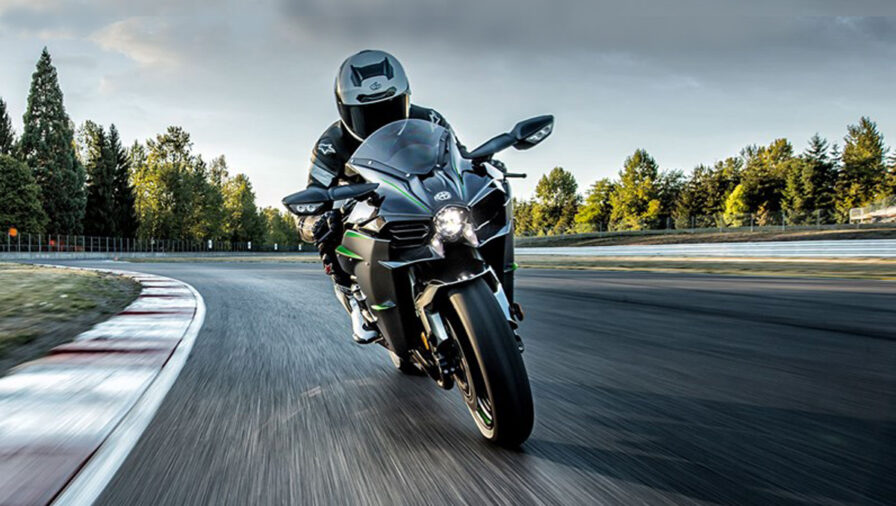
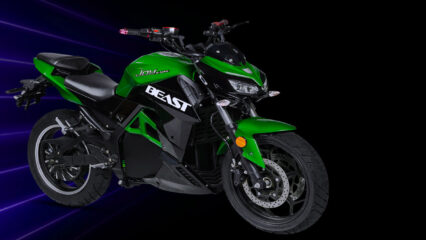
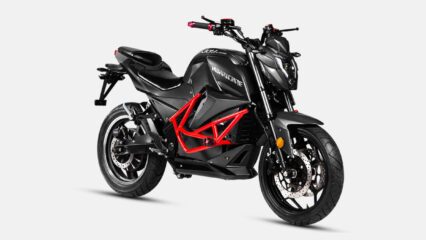
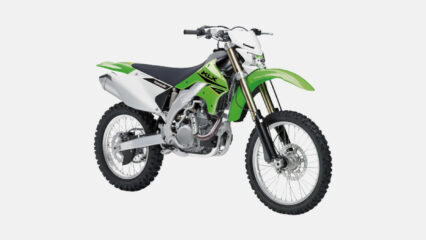
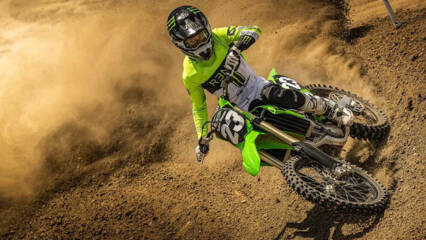

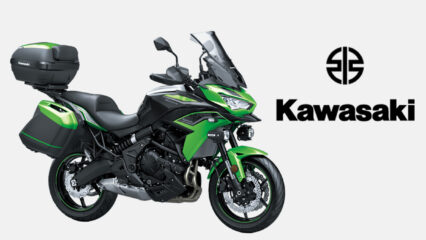
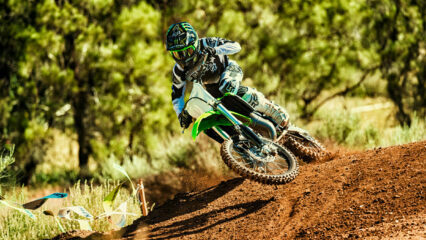
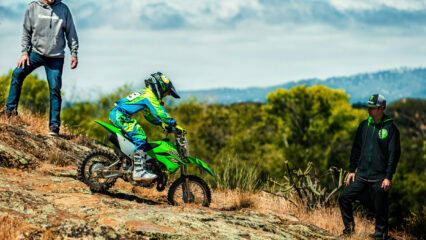
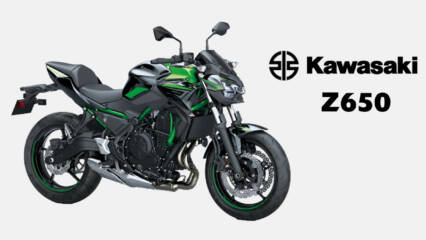
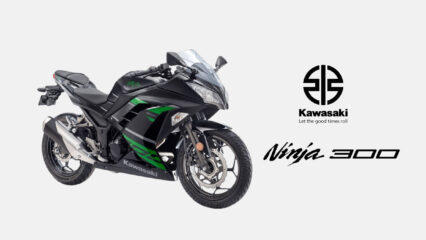
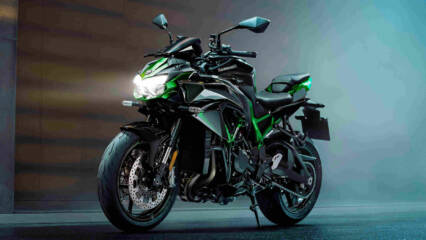
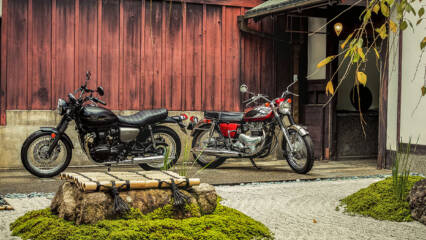
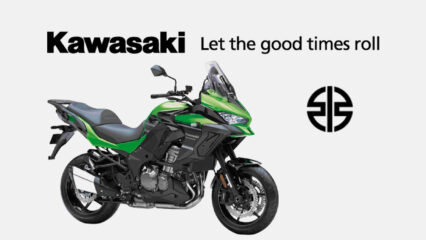
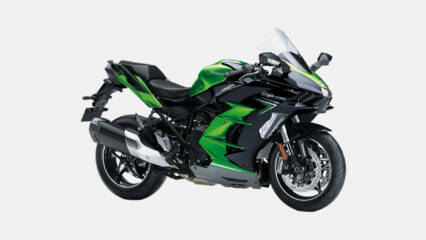
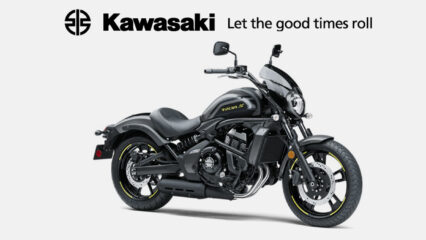
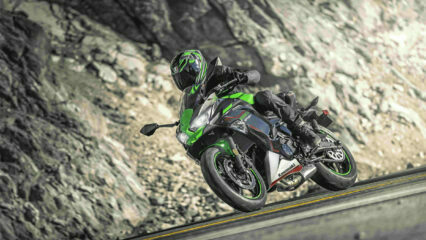
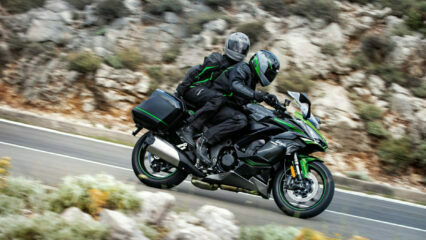
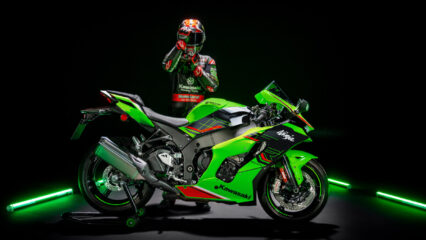
![8 Upcoming Adventure Bikes in India [year] 20 Riders Rally](https://ridersrally.in/wp-content/uploads/2022/12/upcoming-adventure-bikes-in-india_blogimage1-426x240.jpg)
![10 Best 250cc Bikes In India [year]—The Ones with Best Powers 21 Riders Rally](https://ridersrally.in/wp-content/uploads/2022/11/best-250cc-bikes-in-india_blogimage-426x240.jpg)
![Exploring the Range of Best 100cc Bikes in India [year] 22 Exploring the Range of Best 100cc Bikes in India 2024](https://ridersrally.in/wp-content/uploads/2022/11/best-100cc-bikes-in-india_blogimage-426x240.jpg)

![15 Best Bikes Under 5 Lakhs in India [year] 24 Riders Rally](https://ridersrally.in/wp-content/uploads/2022/11/best-bikes-under-5-lakhs_blogimage_up-426x240.jpg)
![11 New Bikes Model in India [year] 25 Riders Rally](https://ridersrally.in/wp-content/uploads/2022/01/new-model-bikes-7-top-launches-of-2021_blogimage-1-426x240.jpg)
![12 Best Bikes under 70000 in India [year] 26 Riders Rally](https://ridersrally.in/wp-content/uploads/2022/01/bikes-under-70000-12-bikes-that-made-the-cut_blogimage-1-426x240.jpg)
![11 Best 200cc Bikes in India [year] 27 Riders Rally](https://ridersrally.in/wp-content/uploads/2022/01/best-200cc-bike-in-india-everything-from-apache-to-xtreme_blogimage-426x240.jpg)